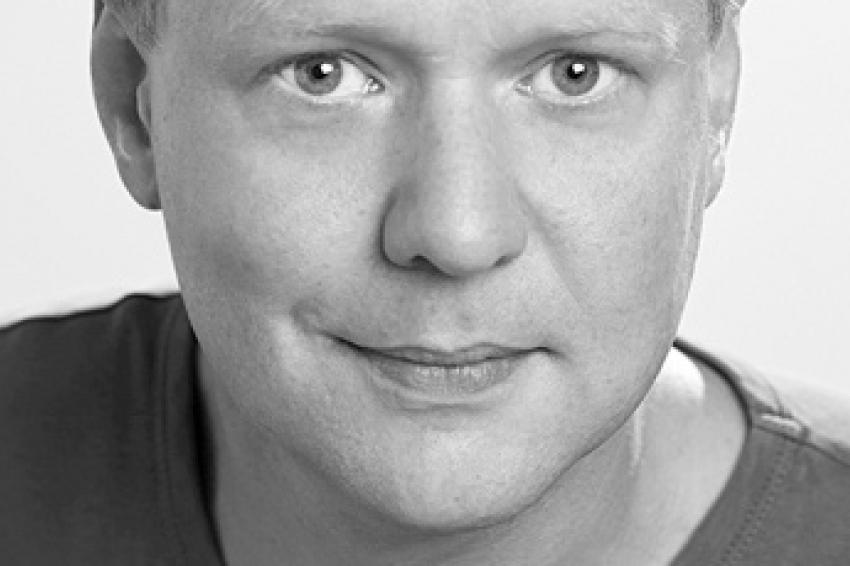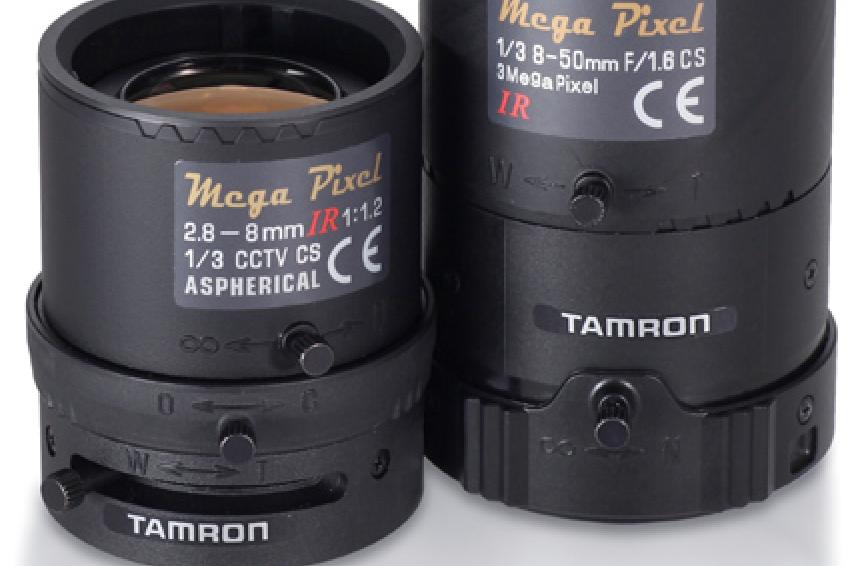Two Lenses for High-definition IP Cameras
22.11.2012 - Tamron wants to make the life of its installers and customers easier with the Double Vari-Focal solution: just two lenses cover the focal lengths most often needed in security appl...
Tamron wants to make the life of its installers and customers easier with the Double Vari-Focal solution: just two lenses cover the focal lengths most often needed in security applications. Matthias Erler of GIT-SECURITY.com spoke with Christian van der Heide, Sales (German-speaking countries) at Tamron Europe.
GIT-SECURITY.com: Mr. van der Heide, you have just introduced two new Tamron lenses for IP cameras. Would you briefly describe them for us please?
Christian van der Heide: These are two lenses to cover the wide-angle and telephoto ranges: the Double Vari-Focal solution consists of a 2.8 to 8 mm and an 8 to 50 mm lens. These lenses are specially for IP cameras with a certified resolution of 3 megapixels. This is essential to get the utmost from modern high-resolution IP cameras - at 1.3 to 2 megapixels, as found with Full HD TV, the advantages of digital zooming cannot be extracted. Our internal tests have incidentally also shown very good results at 5 megapixels: under normal conditions it is therefore possible to obtain a much higher resolution.
What is special about these lenses?
Christian van der Heide: The specialty of the Double Vari-Focal solution lies first of all in the concentration on these two lenses: together they cover the most often required focal lengths. In this way we want to make it easier for customers and installers: they no longer necessarily need to study the multiplicity of different focal length lenses that are available on the market. Both lenses provide very high quality and are optically corrected for infrared illumination.
... and that means?
Christian van der Heide: When switching over to infrared operation during nighttime operation there is a shift in focus. This is because of the different refractive indices of the wavelengths. This is compensated for by the technology so that you don‘t have to manually adjust the focus on the camera. This technology is well-known. However, our lenses also have the advantage that the resolution is maintained even under infrared illumination. Normally the resolution capability of a lens reduces, but our engineers have done some excellent work specifically on this matter.
Is a restriction to just two lenses a customer requirement that you have noticed yourselves?
Christian van der Heide: We do indeed see that many customers ask us for advice about choosing the right lens. The choice available on the market is really quite confusing. Our ‚Simple Choice‘ action therefore produced good feedback as was shown at the Security event. Incidentally, we do still have our other lenses with the whole range of focal lengths available.
What other advantages do these lenses have?
Christian van der Heide: There are many that I could list. Particularly worth mentioning, for example, is the very wide radius to focus the lenses: the focus adjustment ring must be turned a long way and this makes it particularly easy to get the lens sharply focused. Installers know this from everyday experience. It is also important to say that the megapixel resolution is not only in the center of the image but is guaranteed right out to the edges. And that is a decisive point in particular with high-definition cameras - and right here the high quality of our lenses is proven.
The lenses hold up well under extreme operating conditions?
Christian van der Heide: That is also an important quality aspect of our lenses: they are very well tempered, that is, coated. This enables them to continue to operate well under very difficult light conditions - above all during dawn and dusk or when there is strong backlight. Amongst other things, the coating prevents the light being reflected back and forth between the individual elements and continues only in one direction. This helps to prevent disruptive ghost images and a clear surveillance image is always maintained.
You‘re moving here in the high-end segment?
Christian van der Heide: This applies to our Double Vari-Focal concept just as much as our other lenses. We consciously avoid the very competitive low-cost segment. Instead we focus on high-quality lenses in the megapixel range. The quality aspect also includes, for example, the housing, very temperature-stable materials, etc.
Where are your lenses manufactured?
Christian van der Heide: We manufacture in a Tamron-owned factory in China. Design, development and the entire engineering work, however, is done in Japan.
You stress the high importance of the lens in the architecture of a video security system. Is this given enough consideration in your opinion?
Christian van der Heide: Many components go to make up the final image. The first and one of the most important is the lens. The camera can only forward the details that the lens delivers. This is not infrequently ignored, even when a lot of money is spent on video technology.
You launched the lenses at the Security show in Essen - how was the response?
Christian van der Heide: The resonance was absolutely positive, in particular with regard to the reduced line-up. The 2.8-8mm lens is already available and is selling very well. The 8-50mm lens will come onto the market at the beginning of December. With an eye to the already high demand, we are very confident that this will also be a great success.
Many thanks for the conversation, Mr. van der Heide.











